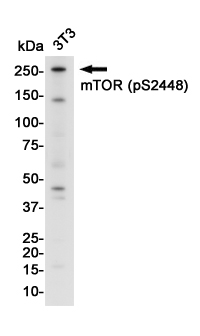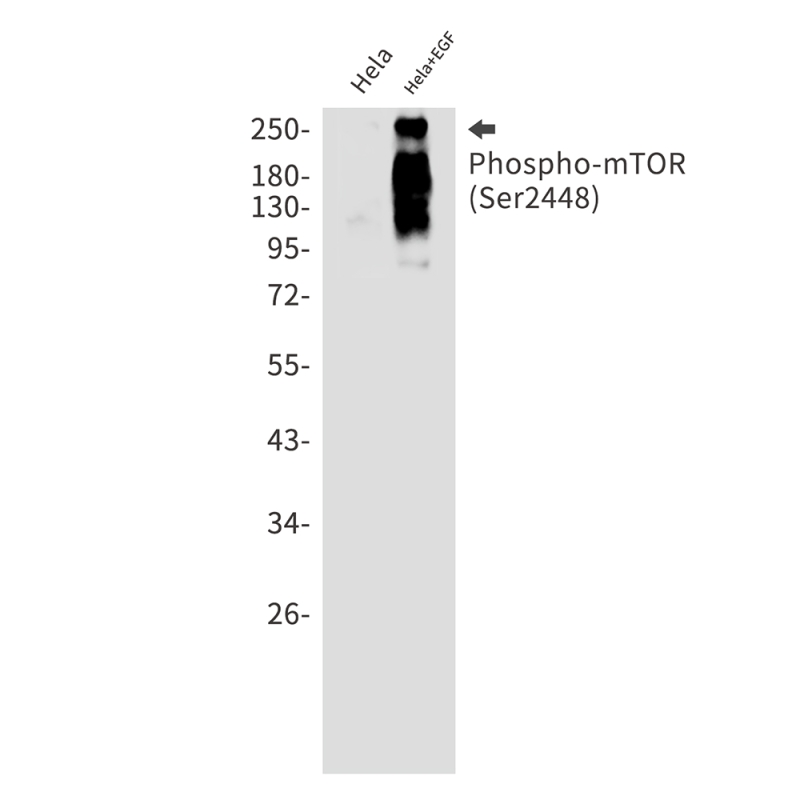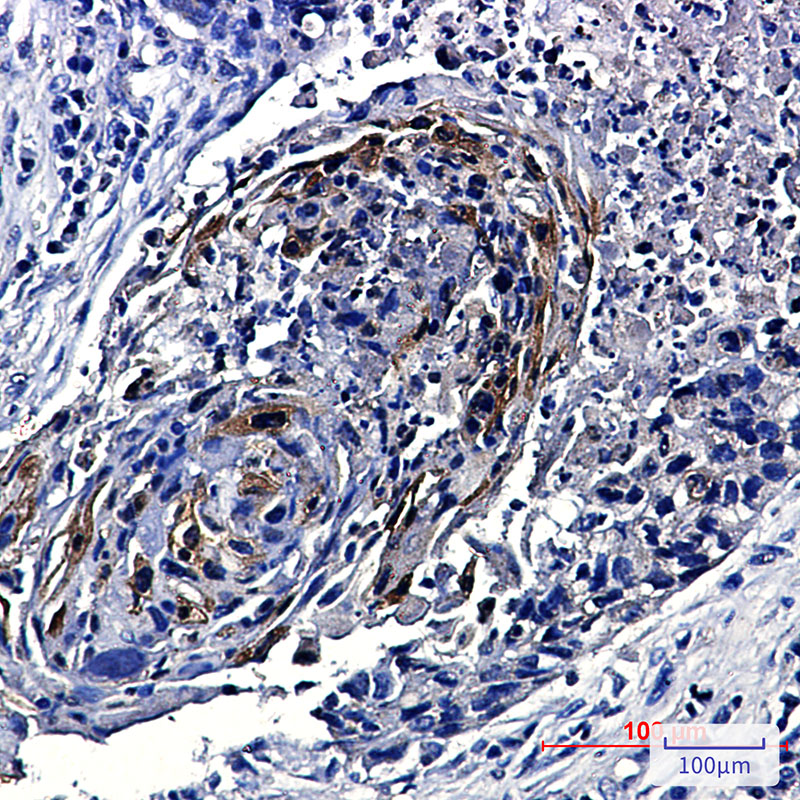


| WB | 咨询技术 | Human,Mouse,Rat |
| IF | 咨询技术 | Human,Mouse,Rat |
| IHC | 1/50-1/100 | Human,Mouse,Rat |
| ICC | 技术咨询 | Human,Mouse,Rat |
| FCM | 咨询技术 | Human,Mouse,Rat |
| Elisa | 咨询技术 | Human,Mouse,Rat |
| Aliases | MTOR; FRAP; FRAP1; FRAP2; RAFT1; RAPT1; Serine/threonine-protein kinase mTOR; FK506-binding protein 12-rapamycin complex-associated protein 1; FKBP12-rapamycin complex-associated protein; Mammalian target of rapamycin; mTOR; Mechanistic tar |
| Entrez GeneID | 2475 |
| WB Predicted band size | Calculated MW: 289 kDa; Observed MW: 289 kDa |
| Host/Isotype | Rabbit IgG |
| Antibody Type | Primary antibody |
| Storage | Store at 4°C short term. Aliquot and store at -20°C long term. Avoid freeze/thaw cycles. |
| Species Reactivity | Human,Mouse |
| Immunogen | A synthetic phosphopeptide corresponding to residues surrounding Ser2448 of human mTOR |
| Formulation | Purified antibody in TBS with 0.05% sodium azide,0.05%BSA and 50% glycerol. |
+ +
以下是关于Phospho-mTOR (Ser2448)抗体的3篇参考文献及其摘要概述:
---
1. **文献名称**:*mTOR is a common downstream effector of the PI3K signaling pathway in mammalian cells*
**作者**:Nave, B.T. 等 (2002)
**摘要**:该研究通过Western blot分析,利用Phospho-mTOR (Ser2448)抗体,验证了胰岛素等生长因子通过PI3K/Akt通路激活mTOR的机制,证实Ser2448位点的磷酸化是mTOR活性的关键标志。
2. **文献名称**:*Rapamycin inhibits phosphorylation of mTOR in a cell-free assay*
**作者**:Shiota, C. 等 (2006)
**摘要**:作者使用Phospho-mTOR (Ser2448)抗体研究雷帕霉素对mTOR活性的影响,发现雷帕霉素通过抑制mTOR复合物1(mTORC1)的磷酸化(Ser2448)阻断其信号传导,揭示了该抗体在药物作用机制研究中的应用价值。
3. **文献名称**:*Akt maintains cell size and survival by phosphorylation of mTOR at Ser2448*
**作者**:Edinger, A.L. 和 Thompson, C.B. (2003)
**摘要**:研究通过基因过表达和抑制剂实验,结合Phospho-mTOR (Ser2448)抗体的检测,证明Akt直接磷酸化mTOR的Ser2448位点,调控细胞存活与代谢平衡,为mTORC1活性调控提供了直接证据。
---
如需更多文献,可补充提供。
Phospho-mTOR (Ser2448) antibody detects the activated form of mammalian target of rapamycin (mTOR), a serine/threonine kinase central to cellular growth, proliferation, and survival. mTOR exists in two complexes: mTORC1 and mTORC2. Phosphorylation at Ser2448. located in the kinase domain, is commonly associated with mTORC1 activation, though it may also occur in mTORC2 under certain conditions. This site is phosphorylated by upstream regulators like Akt/PKB and is subject to feedback regulation from downstream effectors such as S6K1. The antibody is widely used in research to study mTOR signaling dynamics in response to growth factors, nutrients, stress, or pharmacological inhibitors like rapamycin.
Applications include Western blotting, immunohistochemistry, and immunofluorescence to assess mTOR activation status in tissues or cultured cells. Its detection helps elucidate mTOR's role in diseases, including cancer (where hyperactivation promotes tumorigenesis), metabolic disorders (e.g., insulin resistance in diabetes), and neurodegenerative conditions. Researchers also use it to evaluate therapeutic efficacy of mTOR-targeting drugs. Specificity is critical, as cross-reactivity with other phosphorylated kinases can occur; proper controls (e.g., rapamycin treatment or siRNA knockdown) are recommended. This antibody serves as a key tool for mapping signaling pathways and validating biomarkers in translational research.
×